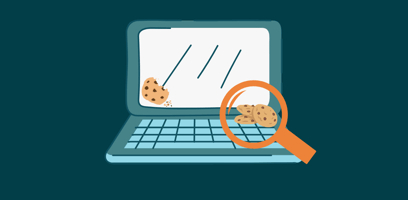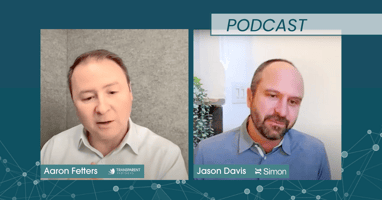
In our current Marketing era where data reigns supreme, marketers are constantly caught between the decline of 3rd party cookies and the rise of 1st party data. As the importance of 1st party data dominates headlines, it’s essential to critically assess the genuine value of 1st party data. This is especially true for the Consumer Packaged Goods (CPG) industry.
We define 1st party data as “consented consumer data that a company collects directly from its own interactions and engagements with consumers.” It can be collected through website interactions, online forms and surveys, events or transactions. Essentially, it can be collected through any other mechanisms through which a consumer interacts in your brands’ owned channels.
In a recent Transparent blog post titled “Is 1st Party Data Worth the Investment?,” Oliver Amidei unpacks the necessity (or lack thereof) of 1st party data, noting that there are unique challenges the Consumer Packaged Goods (CPG) industry faces. In this blog, I will discuss key considerations for CPG brands who are establishing their data strategy to collect consumer data, generate insights and activate.
From my experiences working closely with our CPG clients, there’s one big takeaway. CPG companies cannot, and should not, rely solely on 1st party data, and I will explain why.
For the many CPG brands that want to achieve a 360 view of their consumers and also deliver highly personalized messages, we’ll start by examining where 1st party data falls short.
Fragmented View of the Consumer:
1st party data, while accurate and reliable, offers a fragmented view of the consumer. It is fragmented because it is limited to direct interactions with the brand. Because consumers must willingly share their information, 1st party data volume and variety is naturally limited. It may capture unique brand or promotion interactions, which are insightful. However it tends to miss out on broader behavioral, demographic, and psychographic information that consumers do not explicitly provide.
No Visibility to Purchase Behavior:
For many large CPG brands, there are fewer direct purchase touchpoints due to the reliance on retailers for distribution. Most consumer transactions occur outside the direct purview of the brands. This includes both in-store and online retailers, making it challenging to capture comprehensive consumer data directly.
Even if your brand were to set up owned D2C spaces, consumers will continue to shop wherever they have an existing affinity to do so. Therefore, there is a strong argument that brands should continue to collect 2nd or 3rd party purchase data (e.g. through data providers like Nielsen, Circana, etc.). Doing so would enable them to gain visibility and insight into purchase behavior, for both buyers and non-buyers.
Challenging to Scale:
At the most basic level, most brands do not have a large base of 1st party data. This is because they either have not historically prioritized programs to collect it or do not have the appropriate owned channels to do so quickly. While continuing to build mechanisms that collect more consumer data, buying 2nd and 3rd party data allows for acceleration and scale.
Understanding 1st party data’s limitations underscores the critical role of 2nd and 3rd party data in bridging vital gaps for CPG brands, elevating both the scale and variety of consumer data essential for competitive success.
- Expand Consumer Reach and Scale: For CPG brands, where broad market penetration and continuous consumer acquisition are key, the importance of reach and scale cannot be overstated. 2nd and 3rd party data provides the ability to extend consumer records beyond the confines of direct brand interactions, enabling CPG companies to tap into new segments and markets.
- Increase Precision through Enrichment: 1st party data alone doesn’t provide the robust variety needed to create a comprehensive consumer profile. Enriching 1st party data with 2nd or 3rd party data increases the precision of your marketing activities. This added granularity unlocks more sophisticated targeting strategies (e.g. conquesting-targeting competitors’ loyalists-and geo-targeting). Leveraging enriched data supports the development of deeply personalized campaigns that resonate with regional preferences and behaviors effectively.
- Diversify Data Sources to Unlock AI/ML Capabilities: Leveraging a mix of 1st, 2nd, and 3rd party data sets the foundation for AI and machine learning capabilities. For example, predictive analytics can forecast market trends and consumer behaviors, guiding product development and inventory management. Personalized marketing at scale becomes feasible, significantly increasing campaign effectiveness. Operational efficiencies are also unlocked through streamlined supply chains and optimized pricing strategies.
Revolutionizing CPG Marketing Opportunities with Clean Rooms and RMNs
The landscape of Data Clean Rooms (DCR) and Retail Media Networks (RMN) is rapidly evolving, offering CPG brands unparalleled opportunities to leverage 2nd and 3rd party data. This shift reduces reliance on 1st party data while ensuring consumer privacy and compliance.
- Data Clean Rooms (DCR): DCR environments offer a secure space for analyzing and activating combined datasets without compromising consumer privacy. They are crucial for CPG brands aiming to match and enrich their 3rd party data. The addressable data within the clean room can then be used to activate audiences across your media channels.
- Retail Media Networks (RMN): The emergence of RMNs represents a game-changer for CPG brands, enabling direct engagement with consumers at the point of purchase. The strategic use of 2nd party data, owned by retailers, and its integration with additional 1st or 3rd party data, empowers brands to access and leverage rich transactional data. This data is crucial for understanding purchase patterns, refining audience targeting, and implementing closed-loop reporting to measure campaign effectiveness accurately. By tapping into RMNs, CPG brands can enhance their marketing strategies with transactional insights. Furthermore, ensuring they reach consumers more effectively at the most decisive moments in their purchasing journey.
While I have outlined reasons why solely relying on 1st party data is insufficient, there is still value in collecting it. Here’s why:
- Ownership and Flexibility: 1st party data is owned by your brand, which allows for greater flexibility without reliance on 3rd party vendors
- Transparency and Accuracy: Data collected directly from consumer interactions ensures relevance, timeliness, and a true reflection of known consumer behavior
- Privacy Compliance: Managing 1st party data ensures brands are complying with and upholding high standards of consumer privacy and governance regulations upon collection of consent
- Data Quality and Integration: Match rates within walled gardens or Data Clean Rooms may improve by using 1st party data as a seed audience
Collection Best Practices
When considering the collection of 1st party data, here are several best practices to guide your methods of doing so.
- Pro Tip: Always Provide a Value Exchange – Enhance your consumer interactions with transparent value exchanges to significantly boost both the quality and quantity of the data you collect. Consumers are more likely to share information willingly when there are clear benefits perceived. This ranges from seamless experiences, exclusive offers or entry into special communities. That coupled with a sense of security through straightforward consent mechanisms, can drive increased share data with your brand.
- Pro Tip: Collect the Bare Minimum – Collect as minimal amounts of data as possible (e.g. Email, First Name, Last Name, Date of Birth). Consumers aren’t keen on navigating through endless fields of information. In fact, these barriers will reduce the likelihood of them opting in. Additionally, these touchpoints alone will not unveil everything you want to know about the consumer. This only further highlights the importance and value of finding a balanced approach to data collection.
- Pro Tip: Configure Backend Tags and Taxonomy – Assuming consent has been provided, there are ways to ensure you are capturing more information about your consumer than what they’ll provide. This can be done through configuring your taxonomy structure or tagging various touchpoints in the backend. Doing so provides an array of information such as how they got to your campaign, and what audience they are a part of. You can also learn what channel or brand they are interacting with, or what promotion they are interested in.
In summary, there are advantages and limitations when utilizing all forms of consumer data (1st, 2nd and 3rd party data). The solution? Embracing a robust mix of 1st, 2nd, and 3rd party data. For CPG brands, crafting a tailored data strategy to address the limitations of 1st party data is key. Augmenting it with the appropriate 2nd and 3rd party datasets, will ultimately unlock greater marketing effectiveness.
If you are looking to learn more about developing the right Consumer Data Strategy for your brand, connect with us today!


